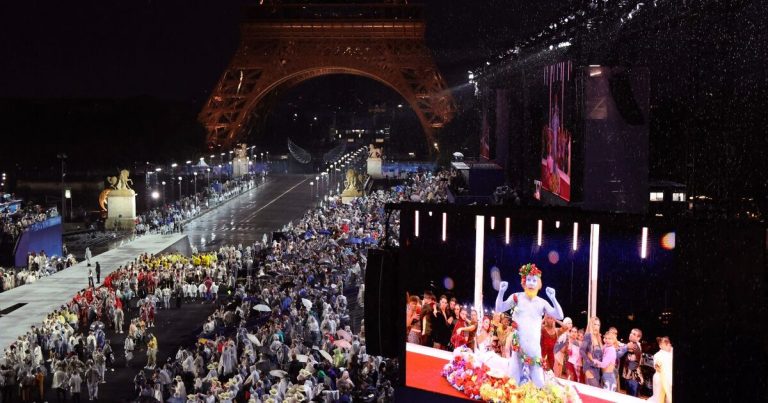
A scene from the opening ceremony of the 2024 Paris Olympics has sparked controversy after many thought it was a reference to the work of Leonardo da Vinci. The Last Supper (1495–98) and a mockery of Christianity. However, art historians and the ceremony’s creative team quickly clarified that the actual painting that inspired the performance, titled “Party,” is by Jan van Bijlert. The feast of the gods (1635–40).
After the opening ceremonies on July 26, viewers quickly noticed similarities between the performance and the well-known depiction of Jesus’ final meal with his apostles in Leonardo’s work. The Last Supper. However, the Magnin Museum in Dijon, France, which owns The feast of the godshinted at the real inspiration behind the scene of the Olympic ceremony X. The institution posted: “Does this painting remind you of anything?” and featured images from 17th century Dutch Baroque painting. Meanwhile, on BFM TV, the creative director of the opening ceremonies, Thomas Jolly, confirmed that the performance was meant to evoke the god of wine, Dionysus, and a great pagan celebration.
On July 28, art historian Walther Schoonenberg supported this clarification X: “The tableau vivant or ‘living painting’ at the Paris 2024 opening ceremony was by The feast of the godsby Jan van Bijlert from 1635,” Schoonenberg wrote.
Commissioned by the Duke of Milan, Ludovico Sforza in 1495, by Leonardo The Last Supper it represents the moment when Jesus announces his betrayal by one of the apostles. It features the 12 apostles seated at one side of the table while a contemplative Jesus holds out his hands in the center. Similarly, van Bijlert The feast of the gods captures a large group of deities gathered around a table, including a central figure reminiscent of an angel with a halo, creating a visual parallel with The Last Supper. while The Last Supper focuses on a biblical narrative, created as part of a renovation project for the convent of Santa Maria delle Grazie in Milan, The feast of the gods it represents the Greek gods in a moment of celebration.
Van Bijlert was a prominent member of the Utrecht Caravaggisti, a Dutch movement inspired by Michelangelo Merisi da Caravaggio. He created The feast of the gods to celebrate Greek mythology through a lively banquet scene filled with gods and goddesses at the wedding of Thetis and Peleus. In the foreground, an apparently drunken Dionysus looks at the grapes while a satyr dances in front of him. The Dutch painter used the chiaroscuro technique to improve the festive atmosphere and the physical position of the deities. Emblematic of the Dutch Golden Age, The feast of the gods it reflects the appreciation of the antiquity of the time. By presenting a performance inspired by the community celebration in The Feast of the Gods the Olympic Organizers emphasized the continuing cultural importance of community traditions such as the Olympic Games.

